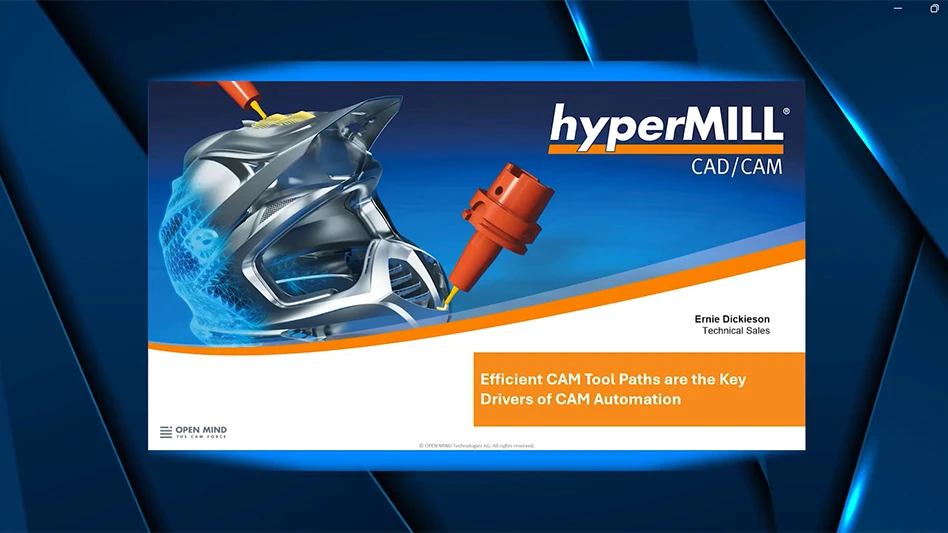When purchasing a machine, many manufacturers will select a spindle interface based upon either what they are already using in their operations or whatever will result in the shortest possible delivery. At first glance, establishing a standard interface within the facility seems to provide a benefit through the consistency it offers. However, this is not always the case. As a general rule, when demanding applications are being run, the convenience of standardization quickly takes a back seat to overall capabilities. When working with difficult materials, long overhangs, or aggressive metal removal rates, attention should be focused on pull force and bending stiffness.
The most common spindle interfaces are the conventional ISO 7/24 steep taper (CAT, BT, DIN with or without flange contact surface), HSK, and Capto. Each of these is an ISO standard. The 7/24 options feature greater tapers than are found on the HSK and Capto. Due to the mechanical properties of the holders, the shallower the taper, the more it will lock itself into place and resist pull force. The old Morse taper provides a perfect example of this, as it was completely self-locking. Additionally, the 7/24 interfaces make use of a pull stud, which has a relatively small diameter thread. Compared to the other two options, the 7/24 interfaces offer weaker resistance to pull forces, despite appearing strong in a visual inspection.
The HSK spindle interface offers a shallower taper that increases clamping forces. It also integrates a draw bar instead of a pull stud. This offers a substantial improvement over the 7/24 options. The Capto system also uses a draw bar, but further increases resistance to pull forces by implementing a tapered polygon design. By using a polygon instead of a circle, torque is transmitted via the entire toolholder instead of just the drive key. The chart on this page shows the maximum pull forces that the various spindle interfaces can withstand.
In addition to resistance to pull force, bending stiffness should be considered when selecting a spindle interface. This is especially vital for aerospace manufacturers working with applications that require long tools. When looking at the 7/24 options, the 7/24 taper with flange contact surface clearly provides increased interface stiffness due to the additional contact between the interface and toolholder.
Selecting a spindle interface with the proper capabilities in terms of pull force and bending stiffness will have a dramatic effect on an aerospace manufacturer’s operations. Increasing tool stability allows for more aggressive machining, improving productivity and profitability. It also reduces vibration, achieving increased part quality and process security.


Looking back at this column and the two preceding it, the topics were selected based on two factors. First, they are frequently lost in the shuffle when a manufacturer is evaluating the myriad of options on a new machine tool purchase. Second, if the wrong option is initially chosen in one of these areas, correcting it can range from being very costly to practically impossible. As a result, these aspects of the machine are well-deserving of consideration up front.
While these columns have attempted to shed light on a few key machine capabilities that are frequently overlooked, there is an even more important message to take away. With the incredible pace of today’s technological development, better means of production are being created on what seems like a daily basis. In such an environment, information is vital to making the best possible machine tool investment. This can only be accomplished by identifying the parties with the most relevant expertise and partnering with them throughout the purchasing process.
Sandvik Coromant
Fair Lawn, NJ
coromant.sandvik.com/us

Explore the August September 2010 Issue
Check out more from this issue and find your next story to read.
Latest from Aerospace Manufacturing and Design
- Piper Aircraft receives its largest ever domestic trainer order
- Miniature, high force-to-size linear voice coil servo motor
- MagniX, Robinson to develop battery electric R66 helicopter
- Zero-point clamping modules
- Hartzell electric engine propeller earns FAA approval for AAM
- Thin profile flame and thermal barrier
- Guill Labs offer materials and extrusion testing
- High production vertical honing systems





